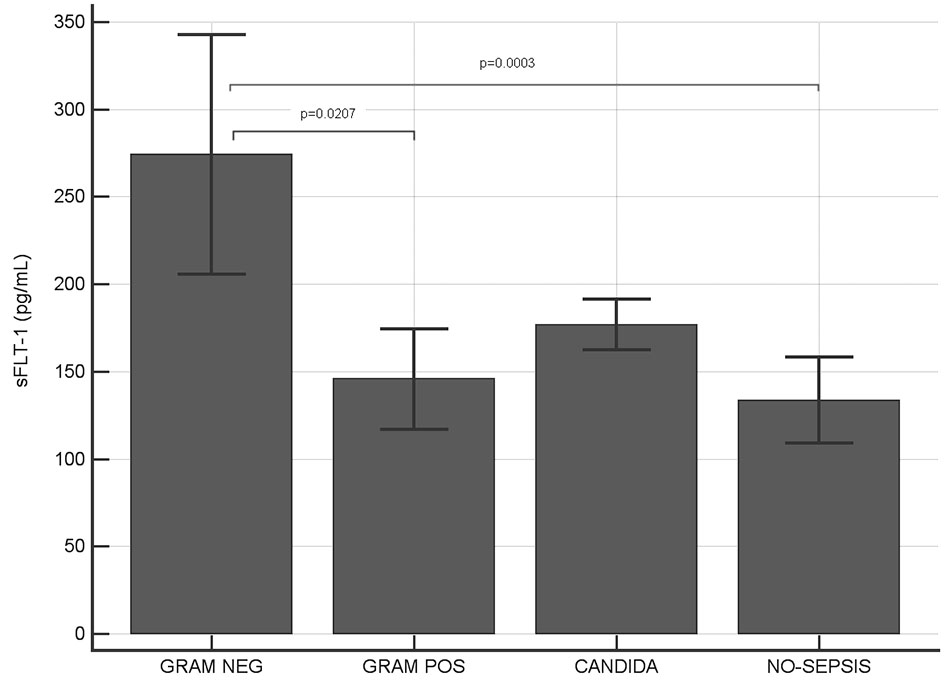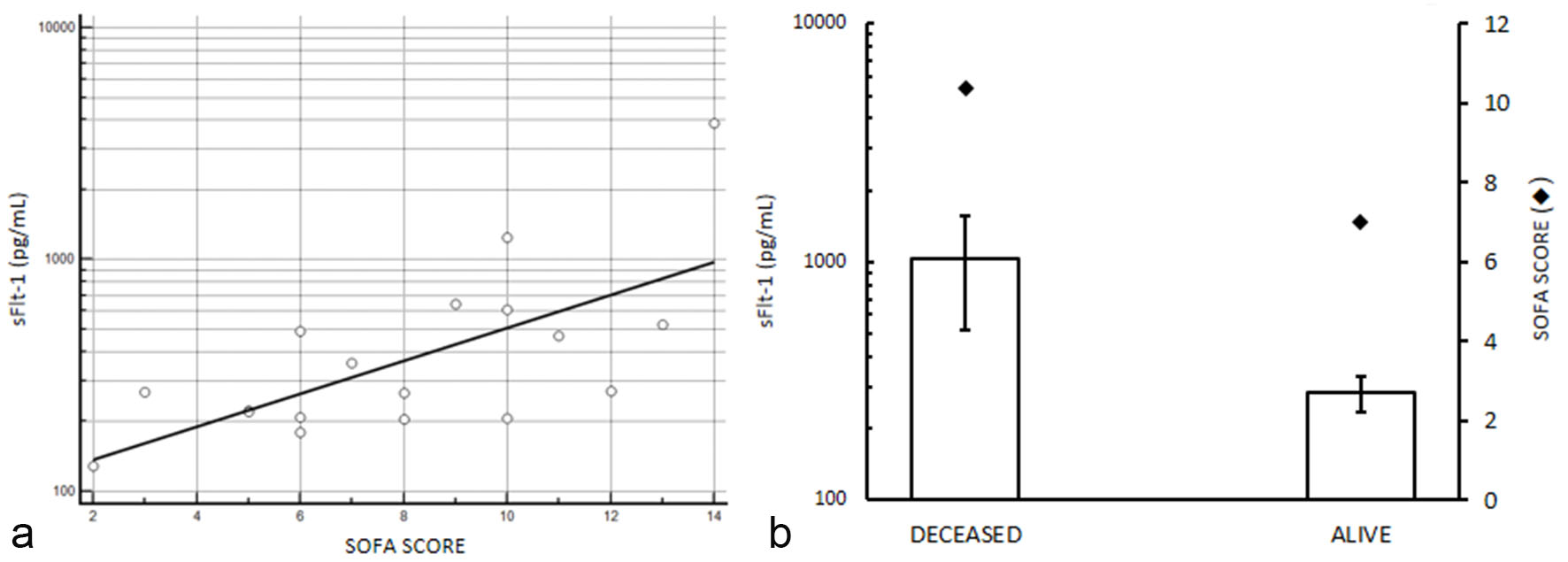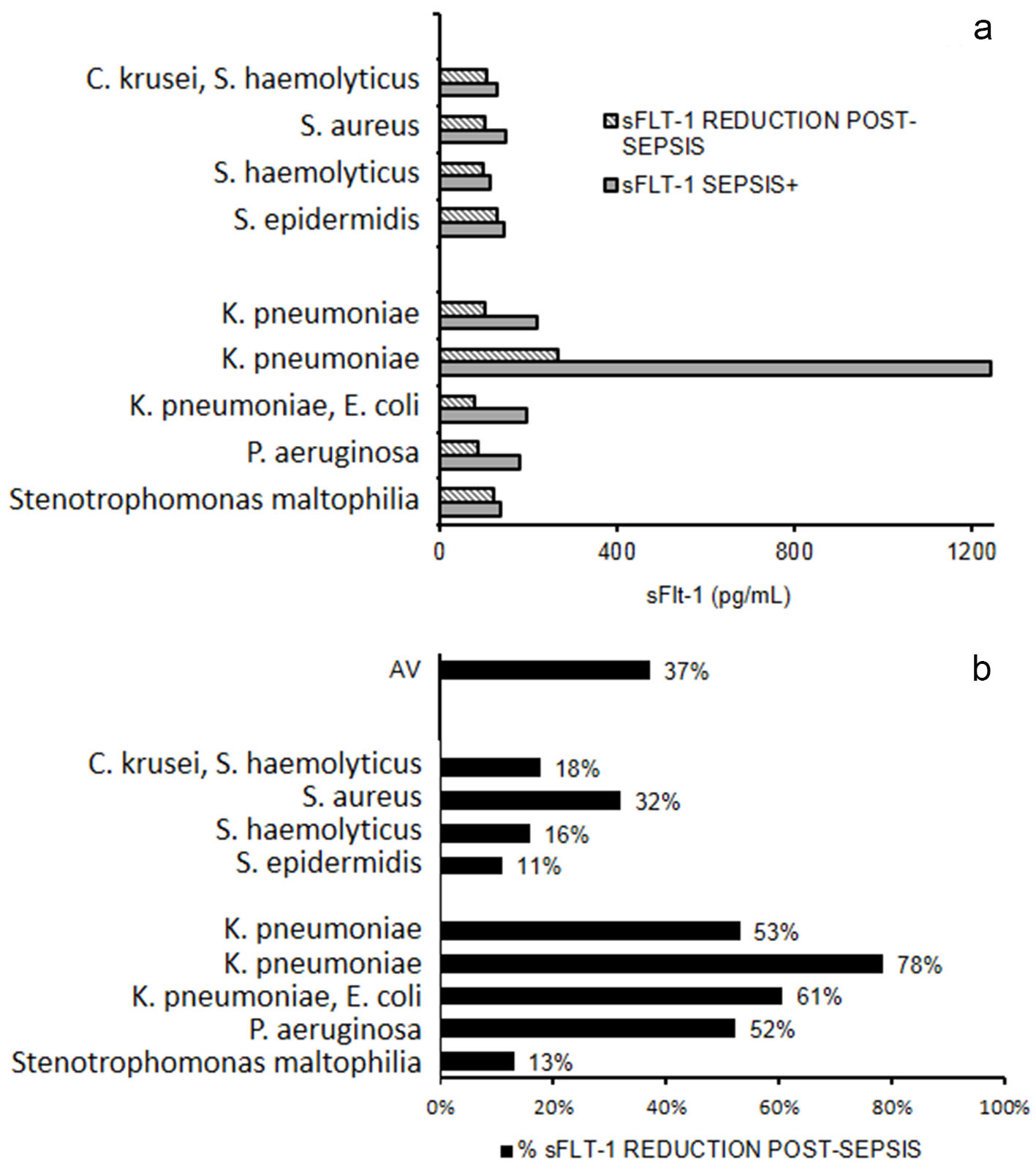
Figure 1. Serum levels of sFlt-1 in patients groups. Septic patients showed significantly higher levels of sFlt-1 compared to sepsis-negative patients and healthy controls (P values indicated in figure; where not indicated, difference was not statistically significant). Two subgroups of sepsis-negative patients who underwent surgery or new borns were separately analyzed due to a potential not baseline condition for sFlt-1 assay after surgery or after birth; they showed a statistically significant difference with healthy controls but not with sepsis-positive nor -negative patients. Results are showed in semilogarithmic plot.

Figure 2. Serum levels of sFlt-1 in Gram-negative, Gram-positive, Candida infections and in sepsis-negative individuals. Significant higher levels of sFlt-1 have been observed in Gram-negative infected patients compared to both Gram-positive and sepsis-negative patients (P values indicated in figure; where not indicated, difference was not statistically significant).

Figure 3. sFlt-1 and sequential organ failure assessment in selected septic patients with serum levels of sFlt-1 higher than 190 pg/mL (see text for details). (a) sFlt-1 and SOFA score correlation, P < 0.0001 by Chi-squared test for trend. (b) serum levels of sFlt-1 mean values in patients deceased after sepsis and in alive individuals; SOFA score mean values are reported in the second axis. Higher serum levels of sFlt-1 and SOFA score are observed in deceased patients compared to survived (P < 0.05 by Chi-squared test). sFlt-1 values are showed in semilogarithmic plot.



